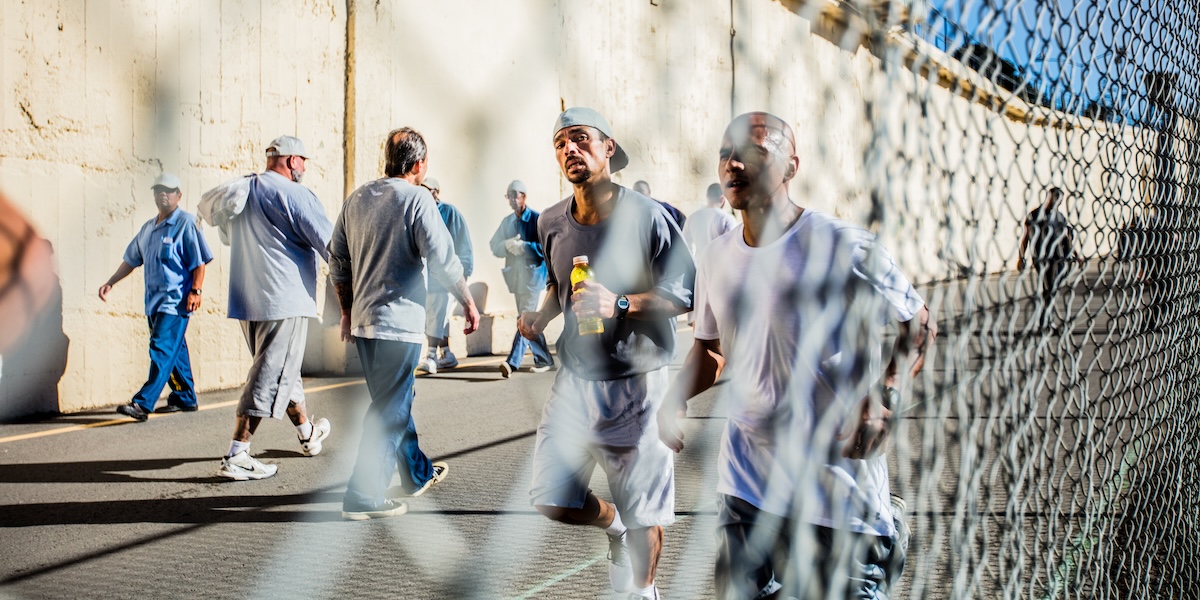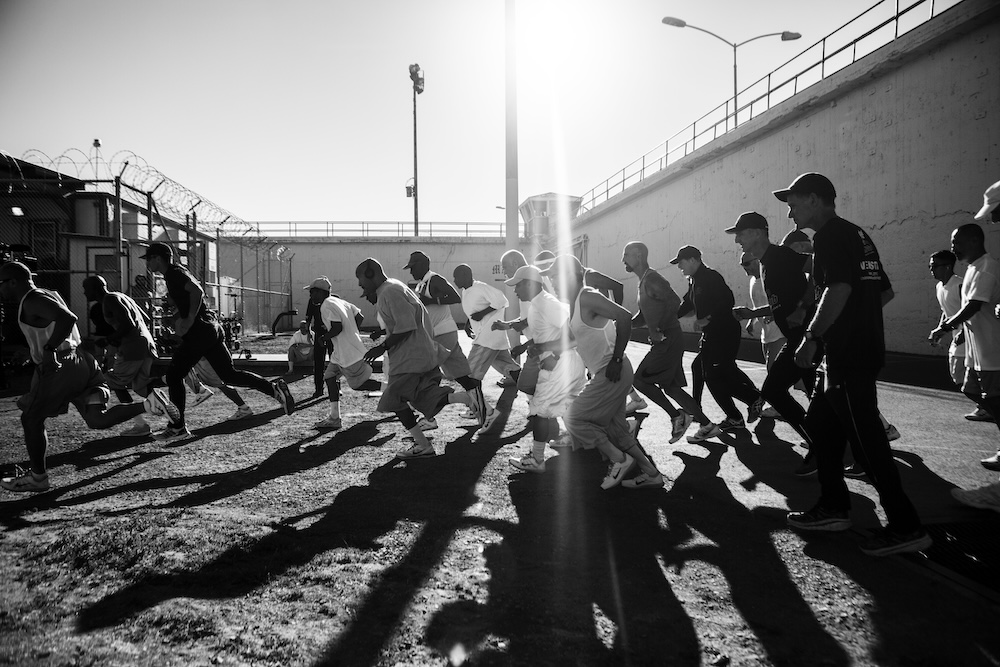
26.2 to Life: The San Quentin Prison Marathon
Posted on Dec 1, 2023
A new documentary, 26.2 to Life, reveals the incredible story of the San Quentin Prison Marathon: a gruelling 26.2-mile race taking place inside the walls of one of the world’s most notorious prisons. Nicola Foley meets the DOP and director to find out more
As infamous prisons go, San Quentin is right up there with the worst of them. Immortalised by Johnny Cash, who famously sang that he hated ‘every inch’ of the place, this worse-for-wear correctional facility on the San Francisco Bay is one of America’s oldest prisons. It also holds the dubious distinction of housing America’s largest death row population. And though the winds of change may be coming, with efforts in place to reform the facility and dismantle its capital punishment provision, San Quentin’s grim notoriety in popular culture persists. Its enduring reputation is one of brutal living conditions and violent clashes, fuelled by a powder keg of chronic overcrowding, racial divides and gang tensions.
Against this charged backdrop, a new documentary unfolds, chronicling the story of San Quentin’s 1000 Mile Club and its annual marathon: a punishing 105 laps around the yard undertaken by prisoners each November. Inviting viewers into the lives of the incarcerated runners and the challenges they face, it sheds light on the transformative power of running, as well as broader issues around the prison system, raising complex questions about criminal justice and rehabilitation.
STARTING BLOCKS
Over six years in the making, the spark for 26.2 to Life ignited when filmmaker Christine Yoo stumbled across an article in GQ magazine about the 1000 Mile Club. This was in early 2016, but her relationship with the prison system goes back much further. “More than 20 years ago, I had a friend who was wrongfully convicted and sentenced to 271 years in California state prison,” she shares. “He was also Korean-American – and he was basically like my brother – so that deeply impacted me. I felt very powerless to do anything, so when I happened upon this article, suddenly, somehow, that jumped out at me as the answer.”
Immediately inspired, she contacted Frank Ruona, the 1000 Mile Club’s head coach, to try and start the process – but was informed that Condé Nast was also sniffing around the story. Undeterred, she drove up to the Bay Area and met with Ruona to pitch herself. “I explained why I was really interested in this topic and what it meant to me. He told me Condé Nast is making an offer, so I didn’t think my chances were great: it was a classic David and Goliath situation!” she laughs. “I said to him – I can tell you that they probably have 20 or 40 projects in development, but I will completely devote myself to doing this. A week later, he called me back and he said, we’ve decided to go with you.”
With a background in narrative film (past credits include rom-com Wedding Palace and anime series Afro Samurai), Yoo hadn’t originally planned to make a documentary, but when she started researching, she realised the story would be best served as a non-fiction piece. Having never produced a documentary before, she had her work cut out – but she never wavered in her commitment to bringing the story to light. It felt, she says, like ‘destiny’.
“I arranged to go into the prison to see a half-marathon event, and what was unfolding in front of me was rehabilitation in action – this real community of people that was astounding to see in a prison environment,” she recalls. “You don’t expect to experience any type of joy or levity inside a prison, and that was the thing that really captured me.”

Yoo then launched a Kickstarter campaign and set about assembling her team, approaching DOP Cliff Traiman after a recommendation from a friend. “I had seen his reel and loved the work he did. He had this sense of being able to create big spaces, and a lot of atmosphere. It had a polished look, but it felt very kinetic. That really attracted me,” she comments.
Traiman was easily persuaded on her vision – and saw huge potential for the project right from the start. “It just sounded like a great story. And then when we started getting deeper into it, I realised, this is a special opportunity,” he recalls. “It was a real treat to be able to be exposed to something like that – and at the same time know that you can leave afterwards. It was a whole different universe, and then to be able to apply the skill sets that I have towards making that story stronger, that was a genuine gift.”
A RUNNING NARRATIVE
The marathon serves as the narrative spine for the film, playing out over the course of the documentary as we dip into the backstories of three 1000 Mile Club members. The story centres around head coach Ruona – a volunteer – and prisoners Markelle Taylor, Tommy Wickerd and Rahsaan Thomas, all of whom are sentenced to life in prison for murder.
“I knew I wanted to cut in and out of the marathon because that’s what happens when you run – your mind goes to all of these different places, and it’s this kind of random-access experience,” explains Yoo. “And I really wanted to put people on that track, and capture these running events for the athletic experiences that they truly are, taking a multicamera approach,” she continues. “But then, when we go into the cellblock, we wanted to focus on what makes that person an individual – in an environment that’s designed to dehumanise somebody, I was interested in individuality.”
Eschewing voiceovers or third-party input, the film embraces an intimately observational, cinéma verité quality. The decision to adopt this style was, in part, a response to practical constraints. With limitations on the equipment allowed into the prison, a rough-and-ready approach was required, which Traiman relished. Reflecting on a preliminary shoot for an interview with Ruona, he recalls shooting in a garage, initially feeling sceptical about the setting. “I remember walking in there, thinking, ’Oh, my God, it’s a frickin’ garage, what are we going to do?’” he laughs. “But that’s where I feel most comfortable – you know, throw me into an environment. You’ve got these objects to play with; just go ahead and work with them… everything’s a bit of a puzzle you have to navigate, and that’s the joy for me. How good can I make something with so little?”
The full version of this story appears in the December 2023 issue of Definition.













